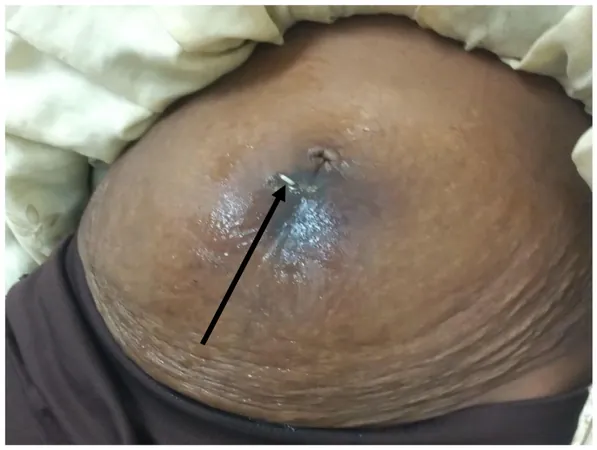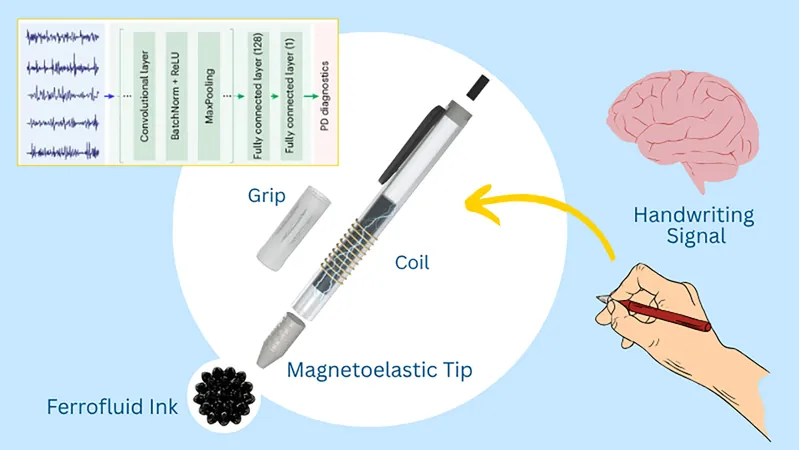
Shocking Discovery: Intra-Uterine Device Found Embedded in Skin of 38-Year-Old Ethiopian Woman
2024-12-30
Author: Siti
Introduction
Intrauterine devices (IUDs) are a widely used contraceptive method due to their effectiveness and safety. They work primarily by preventing sperm from fertilizing an egg, causing changes in the uterine lining, and inhibiting implantation. While generally safe, IUDs can occasionally lead to complications such as menstrual irregularities, pelvic pain, and even ectopic pregnancies. One of the most unusual and rare complications is the migration of the IUD away from its intended uterine location, sometimes resulting in severe consequences.
Case Presentation
We explore the remarkable case of a 38-year-old Ethiopian woman who experienced an astounding instance of IUD migration—her device migrated all the way to the infra-umbilical region of her skin! This woman had been experiencing two months of infra-umbilical skin discoloration and intermittent itching. Medical examination revealed a distinct violaceous patch measuring 7 centimeters, complete with a visible foreign body protruding through the skin.
During a swift and gentle procedure, doctors used ring forceps to extract the IUD without any complications—an extraordinary feat, given the invasive nature of such an operation that is typically required for device removal.
Conclusion and Implications
This case appears to be the very first instance of an IUD migrating to the infra-umbilical skin, adding a fascinating new dimension to the existing medical literature. This highlights the importance of ensuring women are fully informed of potential complications prior to the insertion of IUDs. Regular check-ups and self-examinations should be emphasized, enabling early detection of misplacement.
The IUD used in this case was the copper T-380 A, a non-hormonal contraceptive favored by those wishing to avoid hormonal methods. The unique circumstances surrounding its insertion—just seven weeks postpartum and during a period of exclusive breastfeeding—might have contributed to the device’s migration.
While rare, evidence suggests the likelihood of such migrations is between 1 to 2 in every 1,000 users. Misplaced IUDs can cause additional health issues, including bowel perforation and organ abscesses. Therefore, the need for continued vigilance and awareness around IUD usage is clear.
Unveiling the Migration Mechanism
The possible migration pathways for the IUD were carefully investigated. One hypothesis points to the IUD perforating the uterine wall, then somehow drifting into the surrounding retro-peritoneal space before making its way through the abdominal wall, eventually reaching the skin layer beneath the navel.
The non-invasive method of this IUD's removal stands out as an exceptional case compared to traditional, more invasive surgical methods often required to locate and extract an errant IUD. Doctors can gain valuable insights from this case that may improve the recommendations for follow-up care for IUD users.
In summary, this extraordinary case not only raises awareness of a rarely seen complication but also serves to enhance patient education about IUD risks and the importance of regular health check-ups. As researchers and healthcare providers strive to better understand these rare occurrences, patients are encouraged to be proactive in their contraceptive health.
Call to Action
For those using IUDs, it's crucial to stay informed. Regular self-examinations for IUD strings and timely medical check-ups can help catch any issues early. If you are experiencing unusual symptoms, do not hesitate to contact your healthcare provider for advice!



 Brasil (PT)
Brasil (PT)
 Canada (EN)
Canada (EN)
 Chile (ES)
Chile (ES)
 Česko (CS)
Česko (CS)
 대한민국 (KO)
대한민국 (KO)
 España (ES)
España (ES)
 France (FR)
France (FR)
 Hong Kong (EN)
Hong Kong (EN)
 Italia (IT)
Italia (IT)
 日本 (JA)
日本 (JA)
 Magyarország (HU)
Magyarország (HU)
 Norge (NO)
Norge (NO)
 Polska (PL)
Polska (PL)
 Schweiz (DE)
Schweiz (DE)
 Singapore (EN)
Singapore (EN)
 Sverige (SV)
Sverige (SV)
 Suomi (FI)
Suomi (FI)
 Türkiye (TR)
Türkiye (TR)
 الإمارات العربية المتحدة (AR)
الإمارات العربية المتحدة (AR)